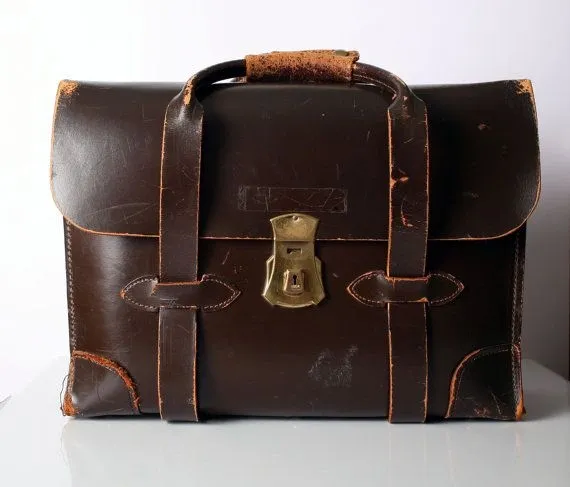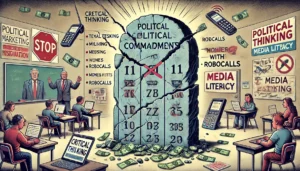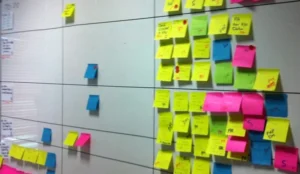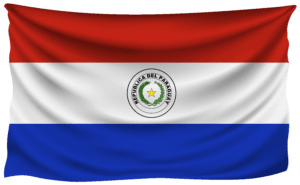By Dr. Chris McGrew, Director, Center for Global Engagement at Indiana State University
The briefcase that belonged to my father is an old leather type with three pockets that separate the inside compartments. On the outside are two stickers: one that identifies a history which included the United States Air Force civil engineering group called Prime Beef and another claiming a membership for the Dogpatch Airlines, the 4650th Combat Support Squadron.
I am a fan of the BBC series The Repair Shop, where experts restore antique and vintage items, and of the PBS genealogy series Finding Your Roots, so I know how documents and artifacts from the past can be the starting point of intriguing stories. I was drawn to open the briefcase and see what stories might be hidden inside.
I know the basic story of the part of my life that included my father. He was a pilot and civil engineer in the US Air Force. He served in Vietnam from January 1970 until he was killed at Phu Cat Airbase near Quy Nhơn in Bình Định Province on July 17, 1970. I still have his obituary, and I knew that he served with honor, as is evidenced by the Distinguished Flying Cross he was awarded after his death. My brother and I visited Vietnam to see where he was stationed, near Cahm Rahn Bay in a village called Phan Rang. We also visited the airport where his C-47 crashed and burned. These were the stories I knew. The briefcase held stories about a life of which I knew little, and the yellowing and deteriorating documents described experiences I never would have dreamed my father had.
The briefcase contained copies of documents that were once part of a personnel file collected during his nearly 20-year Air Force career. The application he completed as he moved from air cadet to officer included the names and addresses of my grandparents as well as the list of schools he attended, starting with primary school in Mitchell, South Dakota, and continuing through his college experiences at Rose Polytechnic Institute—today known as Rose-Hulman Institute of Technology—in Terre Haute, Indiana. The files also included the flight records and scores for his flight school at Goodfellow Air Force Base in Texas, which documented his experiences from the single-engine PA-18s and T-6s to the more powerful T-28s. It included his scores from his time inside the Flying Classroom, the T-29, as well as his navigator course inside a B-25. Finally, he checked out in a KC-97 Stratotanker and was the command pilot of an award-winning crew in 1958. I know this last detail because of an article and picture that were cut from The Impact, a newspaper produced in Kansas by the Strategic Air Command, which indicated the happiness of the crew upon winning the competition and getting a three-day pass.
His role with the 40th Bomb Wing in Kansas had him flying KC-97 Stratotanker. During his time flying these huge four-engine gas stations, he took missions all over the world, with specific stops documented in Rabat-Salé, Morocco, and in North Bay, Ontario, Canada, where he had to reprimand two misbehaving airmen who got drunk the night before they were to leave Ontario and trashed their rooms on the Canadian base. I imagine that the very formal letter is probably still in the personnel files of these now 75+-year-old men. It included the statement that they were such an embarrassment that they would likely never be invited back to that base.
From Kansas, it was off to Lafayette, Indiana. My father was accepted into the Air Force Institute of Technology Air University, which would place him at Purdue University to earn a master’s degree in civil engineering. It was there that my twin brother and I were born, then our family was off to California to Hamilton Air Force Base, where he began his career as an Air Force engineer. He built a golf course somewhere in California. He also spent time in Thule, Greenland, building water and heating systems and in Korat, Thailand, building aircraft revetments, or aircraft parking areas. All of this was documented in his yearly reviews and evaluations.
The paperwork showed that he was known as a bright, hardworking, and dedicated officer. It noted that the work he was doing in Greenland was typically led by a major, and he was only a captain. It was as a captain that he wrote a letter to the parents of an airman who had been killed in an auto accident on his way home to Missouri on a 15-day leave to see those very parents.
I never had the opportunity to hear about these things growing up. Seven days before I turned eight years old, a blue, nondescript sedan pulled up outside our home. Up walked two officers and our pastor. As soon as my mother saw them, she burst out crying, and my brothers, sister, and I were ushered upstairs to begin the rest of our very different lives. Fortunately, I have these documents to fill in elements of my father’s story that I never had the chance to learn from him.
I am a social studies educator, but my focus in social studies has always been economics. However, once I started reading these pages, I began to understand a little more about the stories that open up from simple pieces of paper. I am so thankful for the opportunity to see inside my father’s life, so much more because of the briefcase my father left behind when he went to Vietnam.
The Indiana Historical Society has just opened a new exhibit that provides access to the important documents that many of us teach about. Please visit https://indianahistory.org/events/documents-that-shaped-america/ to learn how you can discover the amazing stories from these Documents that Shaped America.




